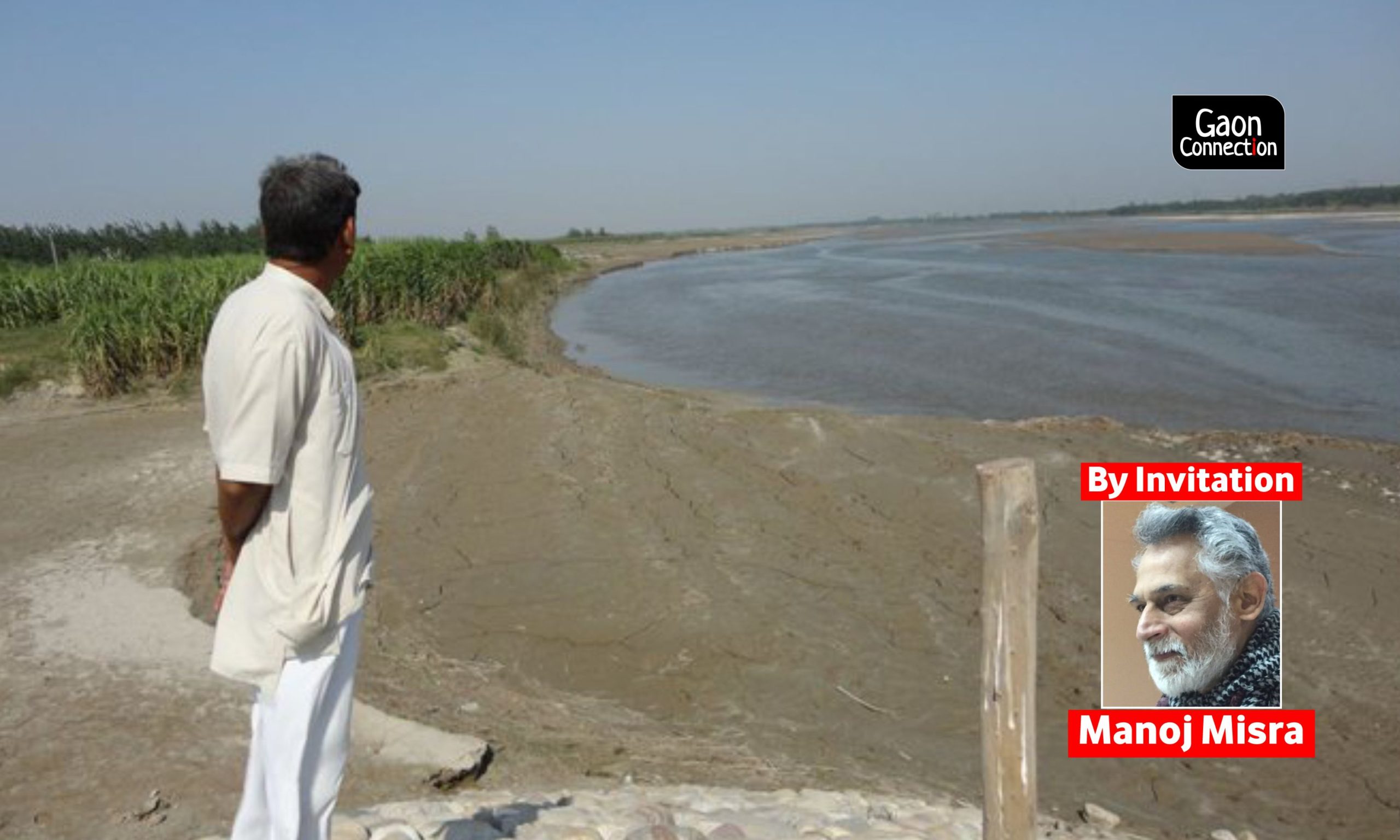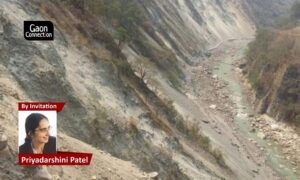Mujhe Katha se mohabbat ho gayi hai … I have fallen in love with the Katha! This public admission by Mustaqueem, a panelist at the India Rivers Week in 2018 sent a pleasant jolt through the audience. The Katha skirts Ramra, Mustaqueem’s village to meet river Yamuna a little distance downstream. One had heard of several endearments for a river but a rivulet as a modern day ‘beloved’ was an absolute stunner. That our hero’s obsession with Katha had resulted in his wife deserting him for few months was perhaps unheard of.
River Yamuna in its middle stretch of some 600 km from Hathnikund (Yamunanagar, Haryana) till Bhareh (Etawah, Uttar Pradesh) is a saga of paradoxes. Famously, the ancient cities of Delhi (also the national capital), Mathura (the land of Krishna) and Agra (known for the Taj Mahal) are found here; Krishna’s Braj and several sites mentioned in the epic Mahabharata dot both its banks; the river has been witness to the rise and fall of the mighty Mughal empire and yet it is here that the Yamuna is considered to be one of the most polluted and threatened rivers anywhere. The latter is from heavy pollution in the form of sewage, industrial effluents emanating from these very cities compounded by a notable absence in this stretch of any major tributary that could have helped the river revive. To worsen matters, the Yamuna forms an inter-state border here over a significant length precluding any state from taking responsibility for it.
In olden times small tributaries like the Katha used to lend a helping hand to the Yamuna as well as provide sustenance to number of villages in the area.
On the map, Ramra village looks like a north-south triple beaded string joint by an axial road. Actually, these are four hamlets with the same name but the fourth one, now called Naya Ramra is across the River Yamuna in the state of Haryana, while the Ramra of our story is in Uttar Pradesh (UP). Sited little north of the Panipat-Meerut highway it is 10 km from the town of Kairana (famous for the Kairana gharana style of Hindustani music) in the Shamli district of UP and 50 km from Panipat town in Haryana. From Delhi it is about 150 km.

Ramra’s fame to history is an almost dilapidated structure called sarai, which reputedly offered rest and security to caravans in some distant past.
The Nadi Mitra Mandali (NMM) at Ramra proved a bellwether of sorts. It plastered the village and nearby with Yamuna slogans; hosted the first ever capacity enhancement workshop for NMMs; involved kids in its cleanliness drives; experimented with groundwater recharge wells and eco san toilet etc. No wonder it won the inaugural inter NMM competition for best performance in 2011.
The NMM benefited from its proximity to the project headquarters at Delhi and a frequent hand holding by Bhim Rawat, the project executant for the northern NMMs. Alas, it remained project driven till Mustaqueem decided to take things in his own hands just as the project was drawing to a close in 2013.

The Katha is a second order stream that meanders some 75 km through the farmlands of western UP. Originating from a perennial pond in village Nayagaon in district Saharanpur it was once the life line of villages like Ramra. Villagers fondly remember the times when the Katha used to flow round the year and carry clear water even during the rainy season quite unlike the Yamuna. This was because of its aquifer origins.
So when the NMM members lamented that their ground water level had plummeted and gotten polluted ever since the Katha had dried it was agreed after consultations that come another flood in the Yamuna, the villagers would try and prevail upon the irrigation department to keep open the gates of a ‘Regulator’ that had been raised downstream of the village to prevent the flooded Yamuna from back flowing into the Katha channel.

In 2012 it thus became a case of ulti ganga behna (river in reverse flow) and Katha way beyond the Ramra village got flush with welcome though muddy waters. The village kids never had it this good before! The village elders celebrated a sudden rise and qualitative improvement in their ground water.

It is at Mawi that the Katha meets the Yamuna. There is also a Central Water Commission (CWC) gauge and discharge measurement site here where the staff makes and reports regular observations on a daily basis which becomes hourly during the monsoon season. During very high floods in Yamuna – as was the case in 2010 – often the staff gets marooned for the gauge centre itself gets flooded.

Mustaqueem was late to join the local Nadi Mitra Mandali but took home most strongly the message that in the revival of local and hence little cared for streams lay the rejuvenation of major rivers like the Yamuna and Ganga.
Realizing that he would need a band of dedicated youngsters to aid his mission he prevailed upon his cricket club members to volunteer.
He has been quite strategic in his approach to the task at hand. While on one hand he petitioned various district level officials and politicians for the revival of the Katha on the other he resorted to imaginative initiatives like the Ek Lota Paani Abhiyaan (one tumbler water from each household) as symbolic contribution to the Katha’s revival.
He led from the front in creating a number of earthen bunds inside the Katha channel slowing the run of monsoon flows enabling the rain water to stand and recharge the ground water. That Mustaqueem was a recipient of the Bhagirath Prayaas Samman in 2019 for his efforts on Katha revival is another story.
Mustaqueem is aware that it’s going to be a long haul and that the Katha, lifeless for decades cannot revive in a jiffy. But he and his growing band of fellow workers keep marching on. Who wouldn’t for their beloved?


















